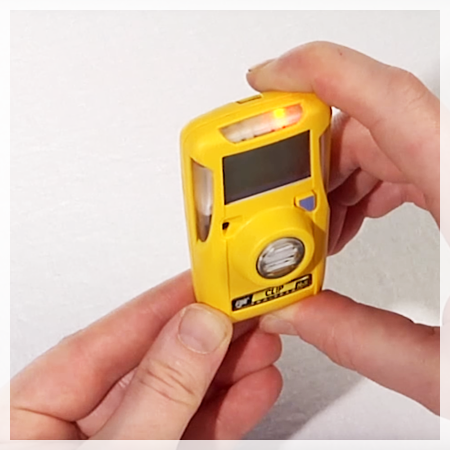Currency
August 28, 2017

Flammable and toxic gas detection instruments are generally available in two different formats: portable, i.e. ‘spot reading’ detectors and ‘fixed’, permanently sited monitors. Which of these types is most appropriate for a particular application will depend on several factors, including how often the area is accessed by personnel, site conditions, whether the hazard is permanent or transitory, how often testing is needed, and last but not least, the availability of finances.
Portable gas detectors are classed as a type of Personal Protective Equipment (PPE), designed to keep personnel safe from gas hazards and allow mobile testing of locations before they are entered. These small devices are essential in many areas where gas hazards could occur, because they are the only means of monitoring an operator’s breathing zone continuously, whilst stationary and moving.
Although fixed gas detection does provide personnel protection in its own right, it cannot move with the operator, and this creates the possibility that the operator could enter an area beyond the detection perimeter of the fixed detector.

Many sites employ a mix of both fixed and portable gas detection, but sometimes portable gas detection is used on its own. This choice may be made for the following reasons:
-- The area may not be entered by personnel very often, making the addition of fixed gas detection cost-prohibitive
-- The area may be small or hard to reach, making the placement of fixed gas detection impractical
-- The application requiring detection may not be stationary itself.
Changing legislation and regulatory compliance, combined with evolving insurance pre-requisites are making the use of portable gas detectors more prevalent in many industries. There is a big drive within many sites to portable gas detection fleet on site is one way of assisting with this. In addition to legislated requirements (where compliance is mandatory), many sites also choose to implement site-specific rules; for example bump testing a portable gas detector before it is used by any operative.
Portable gas detectors are classed as a type of Personal Protective Equipment (PPE), designed to keep personnel safe from gas hazards and allow mobile testing of locations before they are entered. These small devices are essential in many areas where gas hazards could occur, because they are the only means of monitoring an operator’s breathing zone continuously, whilst stationary and moving.
Although fixed gas detection does provide personnel protection in its own right, it cannot move with the operator, and this creates the possibility that the operator could enter an area beyond the detection perimeter of the fixed detector.

Many sites employ a mix of both fixed and portable gas detection, but sometimes portable gas detection is used on its own. This choice may be made for the following reasons:
-- The area may not be entered by personnel very often, making the addition of fixed gas detection cost-prohibitive
-- The area may be small or hard to reach, making the placement of fixed gas detection impractical
-- The application requiring detection may not be stationary itself.
Changing legislation and regulatory compliance, combined with evolving insurance pre-requisites are making the use of portable gas detectors more prevalent in many industries. There is a big drive within many sites to portable gas detection fleet on site is one way of assisting with this. In addition to legislated requirements (where compliance is mandatory), many sites also choose to implement site-specific rules; for example bump testing a portable gas detector before it is used by any operative.









